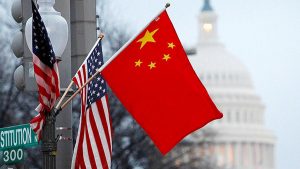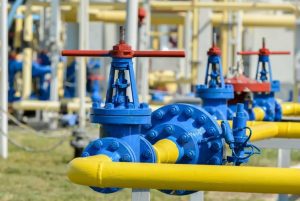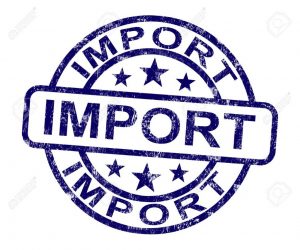
Ukraine will be able to achieve the transfer of entry points for export of gas by Gazprom to the Ukrainian-Russian border only in close cooperation with the European Commission and other European institutions.
This opinion was expressed by representatives of Naftogaz Ukrainy and the Gas Transmission System Operator of Ukraine (GTSOU) at an online briefing devoted to five years of gas independence held on Friday.
“We believe that the possibility of transferring entry points is technically possible. But there is no political consent on the part of the Russian Federation, because they understand that the European gas market is declining and do not want additional competitors. Therefore, we believe that it is necessary to fight against the monopoly position of the Russian Federation together with our European partners and institutions. They will allow us to create such conditions to force the Russian Federation to allow the transit of energy resources through its territory and, if European traders have such a desire, to move the gas entry points to the Ukraine-Russia border,” Director General of GTSOU Serhiy Makogon said.
According to him, European traders have already approached the Russian Federation with a similar proposal, but so far received a negative answer.
According to Lana Zerkal, advisor to the executive board chairman of Naftogaz Ukrainy, it is extremely important for Ukraine to involve the European Commission to cooperate in this process.
“It is the involvement of the European Commission as a moderator of such a discussion that is extremely important, since we already have a positive experience of conducting such trilateral negotiations in the gas sector. And here we should not look like a supplicant. We should do our part of the homework, namely: together with the European Commission conduct full screening and full monitoring of Ukrainian legislation on its compliance with the Ukraine-EU Association Agreement, which will give us the necessary basis for further joint work,” Zerkal said.
The relocation of Russian gas entry points to the eastern border of Ukraine will allow the country to more closely integrate into the European gas market and, in particular, to even more actively involve European traders in the placement of gas in Ukrainian underground storage facilities, she said.

At the end of the fourth five-year period, the United States International Trade Commission (USITC) will revise anti-dumping restrictions on the supply of Certain Cut-to-length Carbon Steel Plate to the American market from Ukraine, Russia and China.
According to the USITC report in the Federal Register bulletin, the start of the review is set for November 2, the deadline for responses from participants in the review procedure is December 2, 2020.
During the revision procedure, USITC will determine the possibility of abolishing anti-dumping duties on these products from China, as well as ending the suspension of the investigation on this type of rental from the Russian Federation and Ukraine – to what extent this may lead to the continuation or renewal of damage to local manufacturers of these products in the United States.

The transit of natural gas from the Russian Federation through Ukraine in January-September 2020 decreased by 38.6% (by 28.3 billion cubic meters) compared to the same period last year – up to 45 billion cubic meters, head of the Operator of the Gas Transmission System of Ukraine (GTSOU) Serhiy Makohon said on his Facebook page.
According to him, the forecast for transit from Russia through the Ukrainian gas transportation system by the end of the year is 55-56 billion cubic meters.

The first container train on the China-Kazakhstan-Russia-Belarus-Ukraine new route, which delivered 41 containers with refrigeration equipment, has arrived in Ukraine.
The press service of Ukrzaliznytsia said on Thursday morning that the train had been on the way for 19 days.
Work is underway on the frequency of the train running once a week. “If there is sufficient cargo, the frequency of running will be increased and the train will run according to a clear schedule,” the press service said.
Work on the route’s capacity filling continues, “especially in the direction of receiving subsidies from China for cargo, so that the conditions of cargo transportation are economically attractive for carriers.”
In addition, Ukrzaliznytsia is developing an online service to enable customers to order a container seat on a train and pay for the service online, similar to purchasing tickets for passenger trains.
Ukrzaliznytsia recalled that direct container trains from China to Ukraine began to run on the territory of four countries from June 8, 2020. During this time, 13 trains have already arrived.
Container traffic accounts for 2.3% of the total volume of cargo transportation by rail in Ukraine. Currently, 36 container trains organized by Ukrzaliznytsia run on a regular basis across Ukraine.

The Cabinet of Ministers of Ukraine decided to ban the import of wagons of residents and the railway administration of the Russian Federation into Ukraine at a meeting on Wednesday, Verkhovna Rada deputy Oleksiy Honcharenko (the European Solidarity faction) said on his Telegram channel. According to the document released by him, in particular, the import of wagons into the customs territory of Ukraine, among the railway administrations, in registration of which there is or was the railway administration of the Russian Federation from February 20, 2014, is forbidden until December 31, 2020 (inclusively).
The decision comes into force from the day of its publication.
“By the Cabinet of Ministers of Ukraine decision No. 1147 dated December 30, 2015 a ban on the import into the customs territory of Ukraine of railway wagons that were in use and which are imported in the customs regime of imports from the Russian Federation has already been introduced. However, since November 2019 Ukraine’s resident legal entities purchased 1,165 wagons, the country of origin of which was not Russia. Some 608 wagon of them were previously owned by resident enterprises of the Russian Federation, and 15 wagons were owned by resident enterprises of the Russian Federation since 2014. In order to ban such rolling stocks as well, we made the relevant amendments to the decision, which the government supported today,” Minister of Infrastructure of Ukraine Vladyslav Krykliy said.

The duty of 65% on coal imported from the Russian Federation to Ukraine with some exceptions is imposed from April 15, 2020, according to government resolution No. 261 dated March 18.
The exception is anthracite coal, bituminous coal and coking coal for metal industry, as well as lean coal for companies generating electricity and heat.
The imposition of the duty on imported electricity earlier announced at the government meeting is not envisaged in the document.